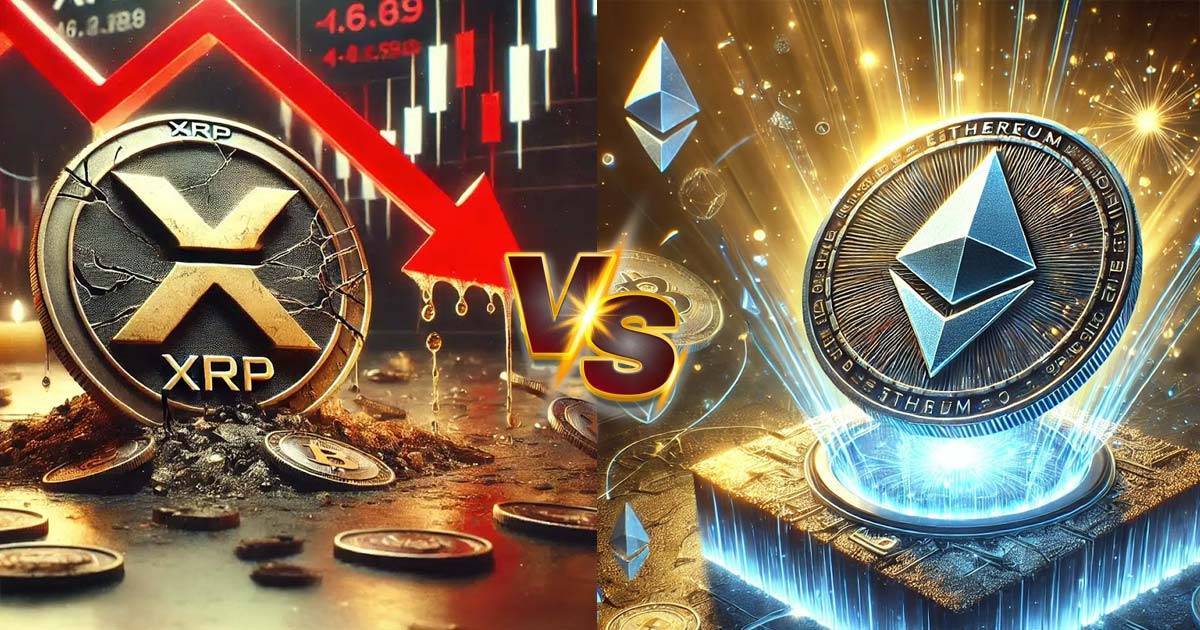Ripple vs Ethereum: A Simple Guide to Two Popular Cryptos

As crypto keeps growing, it’s important to know the key differences between XRP and Ethereum. These two digital currencies are hot topics, each bringing something unique to the table. XRP is great for fast, low-cost cross-border payments, while Ethereum is the backbone of smart contracts and decentralized apps. This breakdown covers their basics, features, and how they fit into the ever-changing blockchain world.
What Makes XRP Unique?
XRP, the digital currency of the Ripple network, is built for fast and efficient international payments. RippleNet, the technology behind it, connects banks and financial institutions worldwide, enabling real-time transactions with lower fees and minimal delays compared to traditional banking.
Unlike many other cryptocurrencies, XRP isn’t mined. Instead, it uses a special consensus system where trusted validators confirm transactions. This approach lets XRP handle up to 1,500 transactions per second—way faster than older blockchains like Bitcoin. Plus, Ripple’s strong ties with banks and payment providers make XRP a practical choice for the financial world.
Ethereum’s Role in Blockchain Evolution
Ethereum changed the game by introducing smart contracts and decentralized apps (dApps), making blockchain useful for way more than just digital payments. Developers now use it to create solutions for everything from finance and gaming to supply chain management.
Ether (ETH), Ethereum’s cryptocurrency, powers the network by covering transaction fees and computing costs. At first, Ethereum used a proof-of-work (PoW) system, but with the Ethereum 2.0 upgrade, it switched to proof-of-stake (PoS). This change boosts scalability, energy efficiency, and transaction speed. While Ethereum’s transactions have traditionally been slower than XRP’s, the move to PoS is expected to bring major improvements.
XRP vs Ethereum: Key Differences
While both XRP and Ethereum operate on blockchain technology, their purposes and features differ significantly. Here’s a breakdown of their main contrasts:
- Consensus Mechanism: XRP uses the RippleNet Consensus Protocol, ensuring fast and energy-efficient transaction validations. Ethereum, on the other hand, shifted from proof-of-work to proof-of-stake, focusing on decentralization and scalability.
- Transaction Speed and Cost: XRP is renowned for its near-instantaneous transactions with minimal fees, making it ideal for financial institutions. Ethereum’s gas fees, although variable, tend to be higher, especially during network congestion.
- Target Audience: Ripple focuses on financial institutions, facilitating cross-border payments and remittances. Ethereum’s ecosystem caters to developers and enterprises looking to leverage smart contracts and dApps.
- Decentralization: Ethereum is more decentralized, with a vast network of nodes globally. XRP’s network, while efficient, is often criticized for its relative centralization due to Ripple Labs’ significant influence.
- Use Cases: XRP excels in payment processing and liquidity management, whereas Ethereum’s use cases span DeFi platforms, NFT marketplaces, and beyond.
Technical Features to Note
Blockchain enthusiasts often examine specific technical details when comparing cryptocurrencies. Here are notable features for XRP and Ethereum:
- Smart Contracts on Ethereum: The Ethereum Virtual Machine (EVM) enables developers to write smart contracts in Solidity, making it a powerhouse for programmable applications.
- Ripple’s Payment Channels: RippleNet’s On-Demand Liquidity (ODL) feature allows seamless cross-border transfers, using XRP as an intermediary.
- Scalability: XRP’s infrastructure supports thousands of transactions per second. Ethereum is catching up with Ethereum 2.0, introducing shard chains to increase capacity.
- Energy Efficiency: XRP’s consensus model consumes less energy compared to Ethereum’s earlier PoW mechanism. Ethereum’s transition to PoS has dramatically reduced its carbon footprint.
- Developer Community: Ethereum boasts a robust developer ecosystem, contributing to its extensive library of dApps and DeFi projects. Ripple’s developer base, though smaller, focuses on enhancing payment solutions.
Practical Applications and Adoption
Ripple and Ethereum have demonstrated significant adoption, albeit in distinct industries. While Ripple has partnered with financial institutions like Santander and American Express, Ethereum’s technology underpins DeFi platforms such as Uniswap and Aave. Both networks have showcased their ability to solve real-world problems through innovation and adaptability.
- RippleNet in Banking: Ripple’s collaboration with global banks underscores its potential as a solution for international settlements. Financial institutions benefit from reduced costs and improved transaction speeds, transforming traditional banking processes.
- Ethereum in DeFi: Decentralized finance relies heavily on Ethereum’s smart contracts. From peer-to-peer lending to decentralized exchanges, Ethereum serves as the backbone for a burgeoning financial ecosystem.
The Future of XRP and Ethereum
The trajectory of both XRP and Ethereum will depend on evolving use cases and technological advancements. XRP’s future hinges on its ability to maintain partnerships with financial institutions and navigate regulatory scrutiny. Meanwhile, Ethereum’s growth is tied to its success in scaling solutions and expanding the DeFi ecosystem.
Understanding their strengths and use cases can help users and investors make informed decisions about which cryptocurrency aligns with their needs. Both assets continue to drive blockchain innovation, solidifying their roles in the digital economy.
